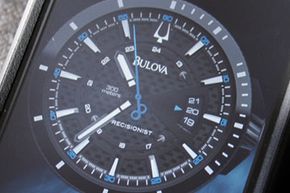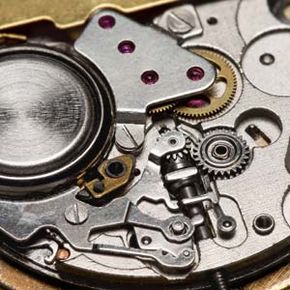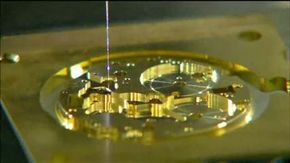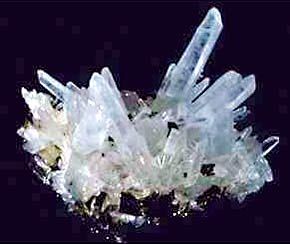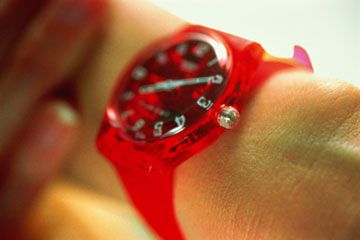Time-telling tools are everywhere these days. Think about the number of mobile devices, clocks on computer sidebars and car radio displays you see before lunch on any given workday; there are plenty of ways to stay on top of the time, it seems.
But there's something about the face of an elegant wristwatch that just can't be duplicated in LEDs, liquid crystal or pixels. The three-handed watch face has served centuries' worth of explorers, businesspeople and users who simply want to mix high style with punctuality.
Advertisement
Of course, that's not to say that watch aficionados will tolerate lesser accuracy for the sake of a pretty piece of wrist jewelry. A watch is a tool first and foremost, and its ability to display reasonably accurate time is the key feature that differentiates it from a mere bangle. Some die-hards may stick to manual-wind watches or their automatic-watch cousins, citing the intricate beauty of their tiny mechanisms and the smooth sweep of their second hands as signs of high class, but most watch-wearers expect the relatively better accuracy and ease of use that come from a watch equipped with a quartz crystal movement.
A number of manufacturers have tried to combine the smoothness of a mechanical watch movement with the precision of the quartz crystal mechanism: Seiko's Spring Drive mechanism marries mechanical power with electronic regulation, while Citizen's Eco-Drive adds solar power and a tiny kinetic generator to the mix. But watchmaker Bulova took a different path in 2010 when it released its Precisionist mechanism: The company claims that this advanced take on quartz watch technology has raised the bar, creating the most precise watch to feature a continuous-sweep second hand [sources: Bulova; Seiko; DiFranco].
Bulova claims that the Precisionist strays from true accuracy 10 seconds or less per year, far better than the 15 seconds per month the company claims is standard for most quartz watches [source: Bulova]. But is that true? Does the Precisionist live up to the billing as a class-leading piece of technology? And how does this unique mechanism eke both smooth movement and high precision out of a quartz crystal mechanism? Take a few minutes to read on; it'll be well worth your time.
Advertisement
